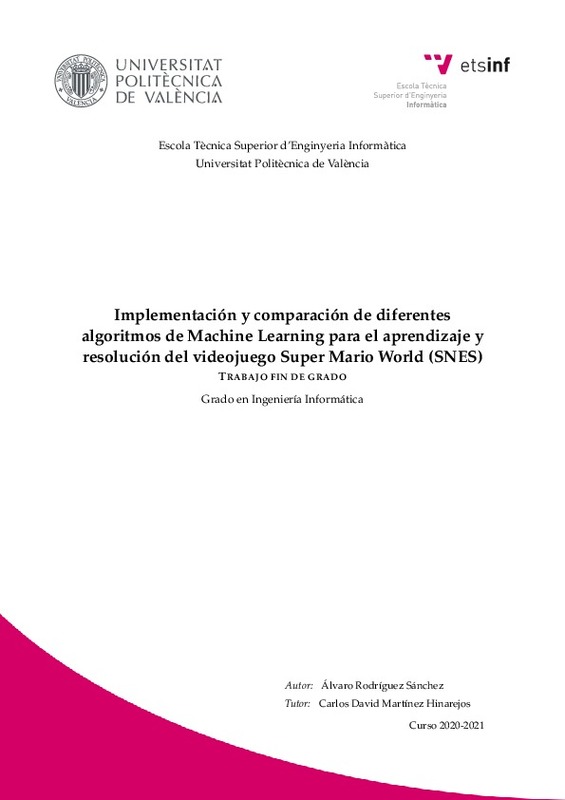JavaScript is disabled for your browser. Some features of this site may not work without it.
Buscar en RiuNet
Listar
Mi cuenta
Estadísticas
Ayuda RiuNet
Admin. UPV
Implementación y comparación de diferentes algoritmos de Machine Learning para el aprendizaje y resolución del videojuego Super Mario World (SNES)
Mostrar el registro completo del ítem
Rodríguez Sánchez, Á. (2021). Implementación y comparación de diferentes algoritmos de Machine Learning para el aprendizaje y resolución del videojuego Super Mario World (SNES). Universitat Politècnica de València. http://hdl.handle.net/10251/172613
Por favor, use este identificador para citar o enlazar este ítem: http://hdl.handle.net/10251/172613
Ficheros en el ítem
Metadatos del ítem
| Título: | Implementación y comparación de diferentes algoritmos de Machine Learning para el aprendizaje y resolución del videojuego Super Mario World (SNES) | |||
| Autor: | Rodríguez Sánchez, Álvaro | |||
| Director(es): | ||||
| Entidad UPV: |
|
|||
| Fecha acto/lectura: |
|
|||
| Resumen: |
[ES] El objetivo del TFG propuesto es desarrollar e implementar dos algoritmos distintos basados en 'machine learning' en el videojuego Super Mario World de la consola Super Nintendo Entertaiment System (SNES), utilizando ...[+]
[EN] The objective of this end-of-degree project is to develop and implement two different algorithms based on Machine Learning for solving the Super Mario World video-game
on the Super Nintendo Entertainment System (SNES) ...[+]
[CA] L’objectiu del TFG proposat és desenvolupar i implementar dos algorismes diferents
basats en machine learning en el videojoc Super Mario World de la consola Super Nintendo Entertaiment System (SNES), utilitzant per ...[+]
|
|||
| Palabras clave: |
|
|||
| Derechos de uso: | Reconocimiento (by) | |||
| Editorial: |
|
|||
| Titulación: |
|
|||
| Tipo: |
|
Localización
recommendations
Este ítem aparece en la(s) siguiente(s) colección(ones)
-
ETSINF - Trabajos académicos [5160]
Escola Tècnica Superior d'Enginyeria Informàtica







